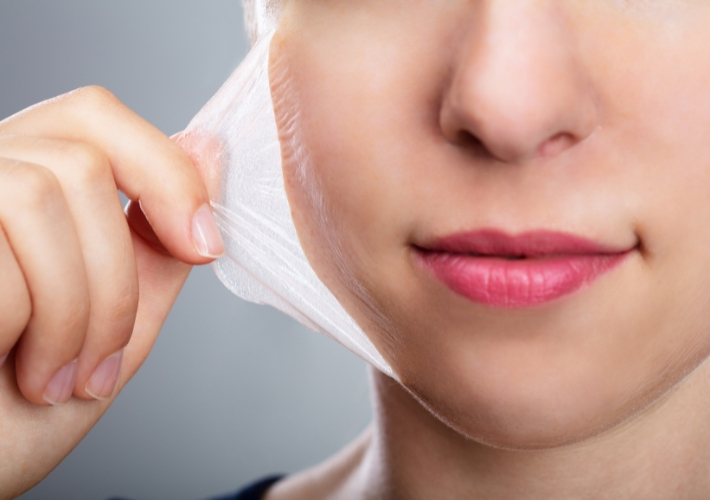
Chemical peels are a popular skincare treatment that can effectively improve the texture, tone, and appearance of your skin. From mild peels to deep peels, each type offers unique benefits and addresses specific skin concerns. Gentle peels, such as alpha hydroxy acid (AHA) peels, are perfect for beginners and people with sensitive skin. They exfoliate the top layer of dead skin cells, revealing a fresh and radiant complexion. On the other hand, deeper peels, like trichloroacetic acid (TCA) peels, penetrate deeper into the skin to target moderate to severe skin imperfections like fine lines, wrinkles, and sun damage.
Chemical peels can also be customized to your specific needs. Whether you want to reduce acne scars, diminish hyperpigmentation, or minimize the signs of aging, there is a chemical peel for you.
Don’t settle for lackluster skin any longer. Explore the different types of chemical peels and uncover the secret to flawless skin today.
Understanding the Different Types of Chemical Peels
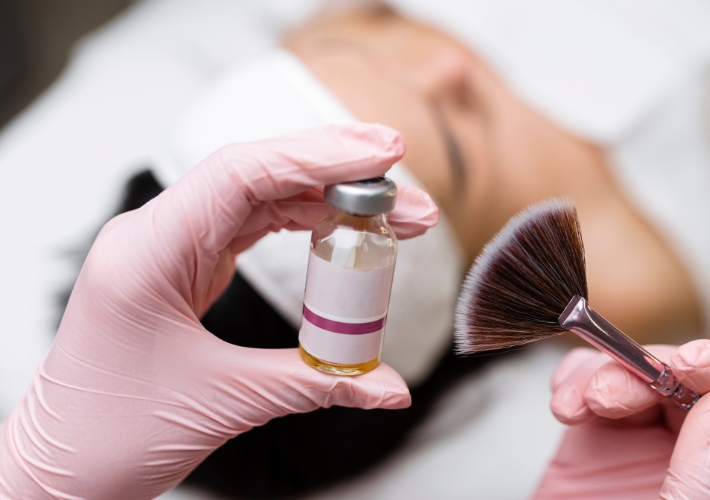
Chemical peels are a popular skincare treatment that involve the application of a chemical solution to the skin, which causes the outer layer of the skin to peel off. This process reveals a new, fresh layer of skin that is smoother, more even-toned, and less prone to blemishes. There are several different types of chemical peels, each with its own unique benefits and considerations.
The main types of chemical peels are superficial peels, medium-depth peels, and deep peels. Superficial peels, also known as “lunchtime peels,” are the mildest type of chemical peel and typically use alpha-hydroxy acids (AHAs) or beta-hydroxy acids (BHAs) to gently exfoliate the top layer of the skin. Medium-depth peels, on the other hand, use stronger acids like trichloroacetic acid (TCA) to penetrate deeper into the skin and address more significant skin concerns. Deep peels, which are the most intense type of chemical peel, use phenol-based solutions to deeply exfoliate the skin and address severe skin issues like deep wrinkles, extensive sun damage, and precancerous lesions.
Before undergoing a chemical peel procedure, it’s crucial to understand the different types and their specific benefits for your skin.
Each type of chemical peel has its own unique benefits and considerations. Superficial peels are great for people with sensitive skin or those looking for a quick, rejuvenating treatment, while medium-depth and deep peels are better suited for addressing more stubborn skin concerns. It’s important to understand the differences between these types of peels and to work closely with a qualified skincare professional to determine the best option for your individual skin type and needs.
1. Superficial Chemical Peels: Benefits and Considerations
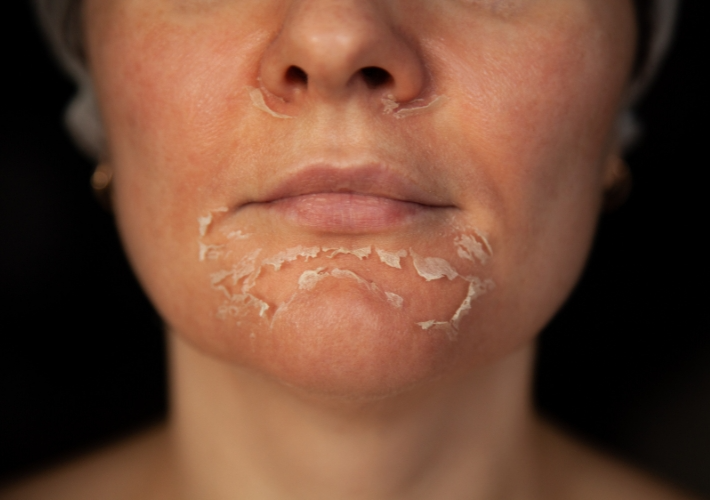
Superficial chemical peels are the mildest and most gentle type of chemical peel, making them an excellent option for those with sensitive skin or who are new to chemical peels. These peels typically use alpha-hydroxy acids (AHAs) like glycolic acid or lactic acid to gently exfoliate the top layer of the skin, revealing a brighter, more even-toned complexion.
One of the primary benefits of superficial chemical peels is their ability to improve the appearance of fine lines, wrinkles, and sun damage. By removing the outermost layer of dead skin cells, these peels can help to smooth the skin’s texture and reduce the visibility of minor imperfections. They can also help to unclog pores, reduce the appearance of blackheads and whiteheads, and improve the overall radiance of the skin.
Another key benefit of superficial chemical peels is their relatively short recovery time. Unlike deeper peels, which can cause significant peeling and downtime, superficial peels typically only result in mild flaking or redness that subsides within a few days. This makes them a convenient option for those with busy schedules or who want to maintain their regular skincare routine with minimal disruption.
If you’re new to chemical peels, you might wonder how often you can get a chemical peel for optimal results without overdoing it.
However, it’s important to note that while superficial peels are generally well-tolerated, they may not be suitable for those with more severe skin concerns, such as deep wrinkles, significant sun damage, or advanced signs of aging. In these cases, a medium-depth or deep peel may be a more appropriate option. Additionally, individuals with certain skin conditions, such as active acne or rosacea, may need to take extra precautions or consult with a dermatologist before undergoing a superficial chemical peel.
2. Medium-Depth Chemical Peels: Benefits and Considerations

Medium-depth chemical peels are a step up from superficial peels, offering more significant improvements in skin texture, tone, and overall appearance. These peels typically use trichloroacetic acid (TCA) or a combination of acids to penetrate deeper into the skin, targeting more stubborn concerns like fine lines, wrinkles, age spots, and uneven skin tone.
One of the primary benefits of medium-depth chemical peels is their ability to address a wider range of skin concerns than superficial peels. By penetrating deeper into the skin, these peels can help to reduce the appearance of moderate to severe sun damage, improve the look of acne scars, and even out areas of hyperpigmentation. They can also help to stimulate collagen production, which can lead to a more youthful, firmer appearance.
Another advantage of medium-depth chemical peels is their longer-lasting results. While superficial peels provide temporary improvements, the effects of a medium-depth peel can last for several months, making them a more cost-effective option in the long run. Additionally, these peels are often more effective at addressing stubborn skin concerns that may not respond as well to gentler treatments.
However, it’s important to note that medium-depth chemical peels do come with a longer recovery time and a higher risk of side effects compared to superficial peels. Patients can expect several days of peeling, redness, and increased sensitivity to the skin, and may need to take time off from work or social activities during the healing process. It’s also crucial to work with a qualified skincare professional to ensure the peel is performed safely and effectively, as improper application or aftercare can lead to complications.
One of the advantages of chemical peel treatments is their ability to address moderate to severe skin concerns with longer-lasting results.
3. Deep Chemical Peels: Benefits and Considerations
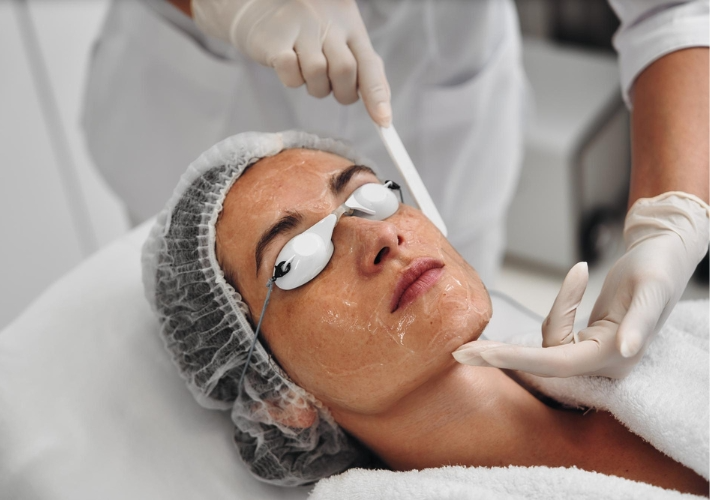
Deep chemical peels are the most intense type of chemical peel, using powerful phenol-based solutions to deeply exfoliate the skin and address severe skin concerns. These peels are typically reserved for individuals with extensive sun damage, deep wrinkles, precancerous lesions, or other significant skin issues that require a more aggressive approach.
One of the primary benefits of deep chemical peels is their ability to dramatically improve the appearance of severely damaged or aged skin. By penetrating deep into the skin’s layers, these peels can help to reduce the appearance of deep wrinkles, remove precancerous lesions, and even out areas of severe hyperpigmentation. The results can be truly transformative, leaving patients with a more youthful, radiant complexion.
Another advantage of deep chemical peels is their long-lasting effects. Unlike superficial or medium-depth peels, which may need to be repeated every few months to maintain results, the improvements from a deep peel can last for several years. This makes them a more cost-effective option for those seeking long-term skin rejuvenation.
However, it’s important to note that deep chemical peels also come with a significantly longer recovery time and a higher risk of side effects. Patients can expect several weeks of peeling, redness, and swelling, and may need to take time off from work or social activities to allow their skin to heal properly. There is also a higher risk of complications, such as scarring or permanent changes in skin pigmentation, which is why it’s crucial to work with an experienced dermatologist or plastic surgeon who specializes in these types of treatments.
Chemical Peel Aftercare: How to Properly Care for Your Skin Post-Treatment
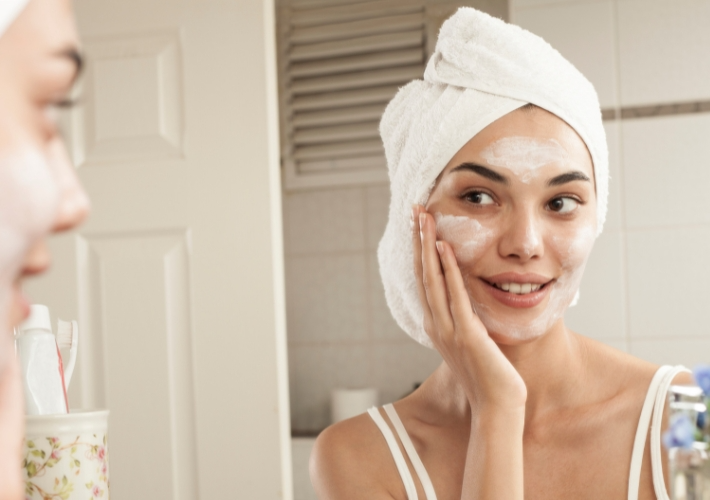
Proper aftercare is essential for ensuring the best possible results and minimizing the risk of complications following a chemical peel. Regardless of the type of peel you’ve undergone, it’s important to follow your skincare professional’s instructions carefully and take a proactive approach to caring for your skin during the recovery process.
One of the most critical aspects of chemical peel aftercare is protecting the skin from sun exposure. The newly revealed skin is highly sensitive and vulnerable to UV damage, which can undo the benefits of the peel and even lead to further discoloration or scarring. It’s important to use a broad-spectrum sunscreen with an SPF of 30 or higher, and to limit time outdoors as much as possible during the first few weeks of the recovery process.
In addition to sun protection, it’s important to keep the skin well-hydrated and avoid any harsh or irritating products. Gentle, fragrance-free moisturizers and cleansers are recommended, and it’s important to avoid exfoliating the skin for at least a week or two after the peel. Patients may also need to use a hydrocortisone cream or other soothing products to manage any redness, swelling, or discomfort during the recovery period.
It’s also essential to follow any specific instructions provided by your skincare professional, such as the frequency and duration of any recommended at-home treatments or the use of any prescription medications. Failing to follow these instructions can increase the risk of complications and may compromise the overall results of the peel.
Knowing when and wearing makeup after a chemical peel can significantly impact your skin’s recovery and overall results.
By taking a proactive and diligent approach to chemical peel aftercare, patients can maximize the benefits of their treatment and enjoy a smoother, more radiant complexion for months or even years to come.
Choosing the Right Chemical Peel for Your Skin Type and Concerns
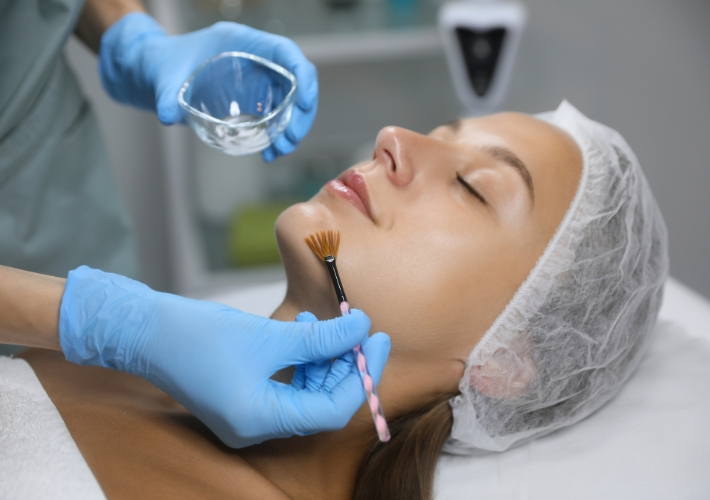
Selecting the right chemical peel for your skin type and concerns is crucial to achieving the best possible results and minimizing the risk of complications. While each type of peel offers unique benefits, it’s important to work closely with a qualified skincare professional to determine the most appropriate option for your individual needs.
When choosing a chemical peel, it’s important to consider factors such as your skin type, the severity of your skin concerns, and your overall goals for the treatment. For example, those with sensitive skin or mild skin concerns may be better suited to a superficial peel, while individuals with more stubborn issues like deep wrinkles or extensive sun damage may benefit more from a medium-depth or deep peel.
It’s also important to consider your lifestyle and recovery time preferences. Superficial peels typically have a shorter recovery period, making them a more convenient option for those with busy schedules. Medium-depth and deep peels, on the other hand, may require more downtime but can offer more long-lasting and dramatic results.
Ultimately, the best chemical peel for you will depend on a careful evaluation of your skin and your specific goals. By working closely with a qualified skincare professional, you can develop a customized treatment plan that addresses your unique concerns and helps you achieve the flawless, radiant skin you’ve been dreaming of.
Conclusion: Finding the Perfect Chemical Peel for Flawless Skin
Chemical peels can be a powerful tool in your skincare arsenal, offering a range of benefits that can transform the appearance and health of your skin. From gentle, superficial peels to more intensive, deep peels, there is a chemical peel option to address virtually any skin concern, whether it’s dull complexion, fine lines and wrinkles, acne scars, or uneven skin tone.
By understanding the unique characteristics and benefits of each type of chemical peel, you can work with a qualified skincare professional to develop a customized treatment plan that meets your specific needs and goals. Whether you’re looking to achieve a radiant, youthful glow or address more stubborn skin issues, there is a chemical peel that can help you unlock your skin’s full potential.
Of course, it’s important to keep in mind that chemical peels, like any skincare treatment, come with their own set of risks and considerations. Proper aftercare and sun protection are essential to ensuring the best possible results and minimizing the risk of complications. By being proactive and working closely with a trusted provider, you can navigate the world of chemical peels with confidence and achieve the flawless, glowing skin you’ve always wanted.
So, what are you waiting for? To experience these benefits firsthand, book for best chemical peel in Arlington and embark on your journey to flawless skin today. Explore the different types of chemical peels and take the first step towards transforming your skin today. With the right treatment and a commitment to proper care, you can unlock a new level of radiance and confidence that will have you feeling and looking your absolute best.
